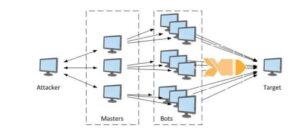
How to Harden Your Infrastructure Using CIS Benchmarks
How to Harden Your Infrastructure Using CIS Benchmarks Introduction As more organizations go faster with their digital transformation, the security and resilience of IT infrastructure
Limited-Time Offer! Get an exclusive 40% OFF on IPSpecialist Premium Monthly & Annual Plans. Use Promo Code: UPSKILLNOW at checkout.

How to Harden Your Infrastructure Using CIS Benchmarks Introduction As more organizations go faster with their digital transformation, the security and resilience of IT infrastructure

Azure Certifications – Validate Your Azure Cloud Skills Introduction Cloud computing has transformed the business landscape, providing scalability, flexibility, and affordability in a way

Top Cyber Security Trends: What Every Organization Must Know Introduction In an era marked by digital transformation, remote workforces, and rapidly evolving threat landscapes,
Table of Contents
Protecting your business from the consequences of Distributed Denial-of-Service (DDoS) attacks and other cyberattacks is vital.
Maintaining client faith in your service by keeping your application available and responsive is a top priority. When your infrastructure must scale in response to an attack, you also want to avoid incurring additional direct expenditures.
Amazon Web Services (AWS) is dedicated to providing you with the tools, best practices, and services you need to protect yourself against malicious actors on the internet. Using the correct AWS services ensures excellent availability, security, and resilience. This article will cover the detailed knowledge of AWS Best Practices for DDoS Resiliency.
AWS is the world’s most complete and widely used cloud, with over 200 fully featured services available from data centers around the globe.
Amazon Web Services offers a comprehensive range of cloud-based services around the world, including computing, storage, databases, analytics, networking, mobile, developer tools, management tools, IoT, security, and business applications that are available on-demand and with pay-as-you-go pricing.
A Denial-of-Service (DoS) attack is a planned attempt to intentionally overwhelm a website or application with network traffic such that users are unable to access it. Attackers employ a number of tactics that eat up a lot of network bandwidth or monopolise other system resources, impeding access for authorised users. A DoS attack against a target is often carried out by a lone attacker using a single source, as indicated in the following figure.

DDoS (Distributed Denial-of-Service) attacks are among the most common and dangerous cyber attacks. DDoS attacks involve overwhelming a server or network with traffic from multiple sources, rendering it unable to function correctly. DDoS attacks can be launched by cyber criminals, hacktivists, or even nation-state actors. They can have devastating consequences for the targeted organization, including financial loss, reputational damage, and disruption of critical services.

Amazon Web Services (AWS) provides several best practices for DDoS resiliency. Here are some of the key ones:
By implementing these best practices, AWS users can benefit from increased resiliency against DDoS attacks and better protect their infrastructure and applications.
As DDoS attacks become increasingly sophisticated and frequent, the best practices for DDoS resiliency on AWS will continue to evolve. Here are some potential future directions for AWS best practices in this area:
AWS provides several best practices for DDoS resiliency to help protect their customers’ infrastructure and applications from DDoS attacks. These practices include using AWS Shield, implementing VPC Flow Logs, utilizing AWS WAF, enabling AWS CloudTrail, using Elastic Load Balancing, implementing Auto Scaling, and regularly testing DDoS mitigation strategies.
By following these best practices, AWS users can benefit from increased resiliency against DDoS attacks and better protect their applications and infrastructure. To keep ahead of new threats, organizations must prioritize DDoS resiliency as part of their overall security strategy and continuously analyze and upgrade their safeguards as needed.
© 2025 All rights reserved | Privacy Policy | Terms and Conditions | Sitemap | Cookie Policy




